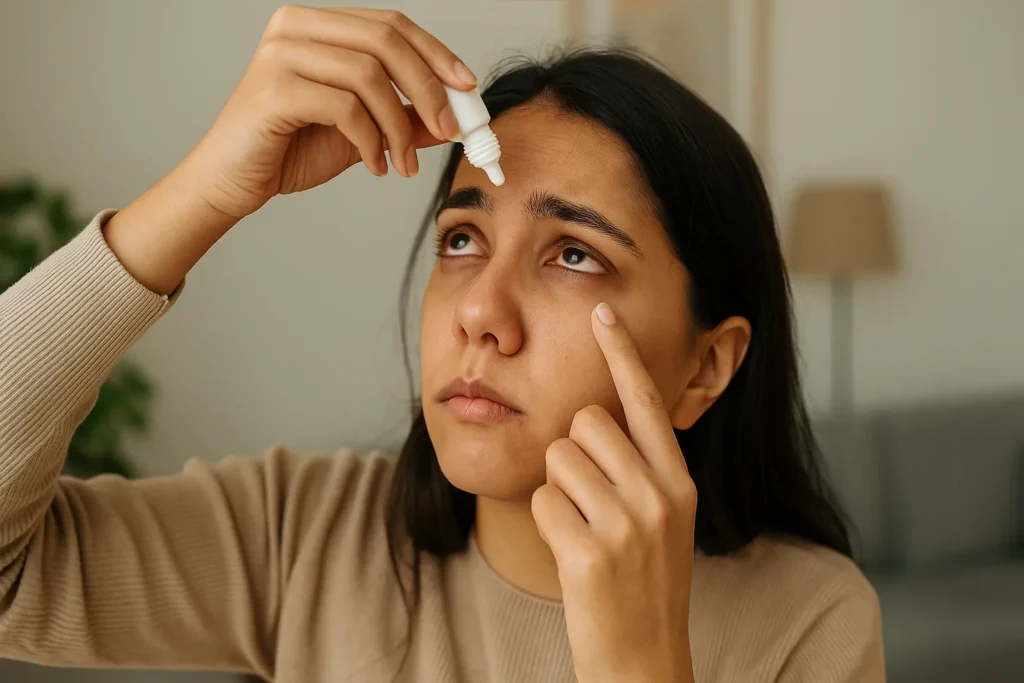If you’ve ever found yourself or someone you know dealing with red, itchy, or watery eyes, you might have wondered if it could be the notorious “eye flu.” But what exactly is eye flu? How is eye flu spread, what symptoms should you watch for, and is it really as contagious as people say? Grab a cup of coffee and let’s get to the bottom of how eye flu spreads and what you can do to protect yourself and your family.
What Is Eye Flu?
Before we dive into the details of how eye flu spreads, let’s demystify the term. Eye flu, often known as conjunctivitis or “pink eye,” is a common infection that makes the white part of your eye look red and irritated. It’s primarily caused by viruses or bacteria. Sometimes, allergies or irritants can trigger similar symptoms, but only infectious conjunctivitis can actually spread from person to person.
What Causes Eye Flu?
Let’s start at the source. Eye flu, scientifically known as conjunctivitis, has several possible causes, and understanding them is the first step to stopping its spread.
- Viral infections: The most common cause, especially from adenoviruses. These viruses are also culprits behind the common cold and upper respiratory infections, making eye flu both common and highly contagious.
- Bacterial infections: Bacteria like Staphylococcus aureus and Streptococcus pneumoniae cause another type of conjunctivitis. While less common than viral, bacterial eye flu can be more severe.
- Allergies and irritants: While not contagious, allergies and exposure to smoke, dust, or chemicals can make eyes irritated and inflamed. Allergic conjunctivitis doesn’t spread from person to person, but symptoms can be just as annoying.
In short, viral and bacterial infections are the real culprits when it comes to contagious eye flu, while allergies just make your eyes miserable.
How Eye Flu Spreads: The Sneaky Ways Germs Travel
You might be surprised by how easily eye flu spreads. It isn’t just about direct eye-to-eye contact.
How is eye flu spread?
- Direct contact: Touching infected eye secretions—say, from wiping your eyes then touching someone else or an object.
- Shared items: Using someone else’s towels, pillowcases, eye makeup, or even eye drops can transmit the infection.
- Touching contaminated surfaces: Germs from sneezing or coughing can linger on surfaces you touch and then transfer to your eyes when you rub them—yes, it’s that easy!
- Respiratory droplets: In cases of viral eye flu, coughing or sneezing near someone can also spread the virus, as droplets settle on hands or surfaces.
The bottom line is: eye flu is highly contagious, especially in the first few days of symptoms, and can spread easily in crowded places or shared households.
What Are the Symptoms of Eye Flu?
Not sure if you have eye flu? Here’s what to look for:
- Red or pink appearance in the eyes
- Itchiness or a gritty sensation
- Excessive tearing or watery eyes
- Swollen eyelids
- Sticky yellow, green, or clear discharge
- Sensitivity to light (photophobia)
- Blurred vision in more severe cases
- Pain or a burning sensation
Some people may also experience flu-like symptoms such as fever and sore throat if the infection is viral.
It’s important to note that symptoms can affect one or both eyes and can sometimes switch from one to the other during the course of the infection.
How to Treat Eye Flu | Don’t Panic

So you’ve figured out you’ve got eye flu, now what? The good news is, most cases are mild and resolve on their own, but effective relief strategies can help you feel better sooner.
At-Home Remedies
- Warm compress: Place a clean, warm, damp cloth over closed eyes a few times a day for relief.
- Artificial tears: Over-the-counter lubricating eye drops can soothe irritation and dryness.
- Cleaning discharge: Gently wipe away eye discharge with a clean tissue or cotton pad.
When to See a Doctor
- Your symptoms worsen or last more than 2 weeks.
- You develop severe pain, vision changes, or heavy discharge.
- There’s a known allergy to medications or ongoing eye conditions.
Medical Treatment
- Bacterial eye flu: Doctors may prescribe antibiotic eye drops or ointments.
- Viral eye flu: Usually no specific medication, just symptomatic relief.
- Avoid contact lenses until your eyes fully recover.
Following your doctor’s advice and practicing good hygiene speeds up your recovery and prevents spreading it to others.
How Many Days Does Eye Flu Last?
This is one of the most frequently asked questions.
- Viral eye flu: Usually lasts 5-7 days, sometimes up to 2 weeks depending on severity and your immune system.
- Bacterial eye flu: Often improves within 3-5 days if properly treated with medication.
- Allergic conjunctivitis: Persists as long as you are exposed to the allergen; removing the irritant brings quicker relief.
Generally, you are most contagious in the first few days of symptoms, so stay cautious and practice strict hygiene throughout this period.
How to Protect From Eye Flu
Protecting yourself and your loved ones from eye flu is simple, but requires a bit of mindfulness every day.
Practical Prevention Tips
- Wash your hands often with soap and water, especially after touching your face or eyes.
- Avoid touching or rubbing your eyes unless your hands are clean.
- Don’t share personal items like towels, linens, pillows, or eye makeup.
- Clean your phone and frequently touched surfaces regularly.
- Cover your coughs and sneezes with a tissue or elbow.
- Change pillowcases and hand towels daily if anyone in your household has eye flu.
- For contact lens users: Strictly follow lens hygiene or switch to glasses until your infection resolves.
- Social distance: Stay away from crowded places during outbreaks, and isolate yourself if you’re infected.
Adopting small, consistent habits can go a long way in preventing the spread of eye flu.
Looking for more practical, everyday health answers? NutBolt India is your reliable resource to make sense of the What, Why, and How behind health topics that impact your daily life.
Can We Use Mobile in Eye Flu?
This is a common worry, since mobile screens are a daily part of life. There is no evidence that simply using your mobile causes eye flu or worsens the condition. However, be mindful:
- Limit screen time to avoid eye strain and fatigue, as your eyes are sensitive while healing.
- Keep your phone clean, since viruses and bacteria can stay on surfaces and potentially re-infect your eyes if hands are not washed before use.
- Avoid touching your eyes when using your phone.
So yes, you can use your mobile, but with caution.
Is Eye Flu Dangerous?
Eye flu is usually mild and clears up without any problems, but rarely, complications can arise if it’s left untreated or if it becomes very severe.
- Most people recover without long-term effects.
- If not properly managed, severe bacterial or viral infections can lead to corneal damage, ulcers, or more serious eye problems.
- Signs that require urgent medical attention: sharp pain, sudden vision loss, severe redness, or symptoms not improving after 1-2 weeks.
Take your symptoms seriously and seek professional help if anything feels “off.”
Key Takeaway
Eye flu may sound alarming, but with careful attention to hygiene and prompt action at the first sign of symptoms, you can prevent its spread and heal faster. Remember, eye flu is usually mild, but you’re the first line of defense against its spread—simple measures like frequent handwashing, avoiding shared items, and keeping your environment clean make a big difference.
Stay informed and stay healthy with trustworthy insights from NutBolt India, your go-to hub for everyday answers!













